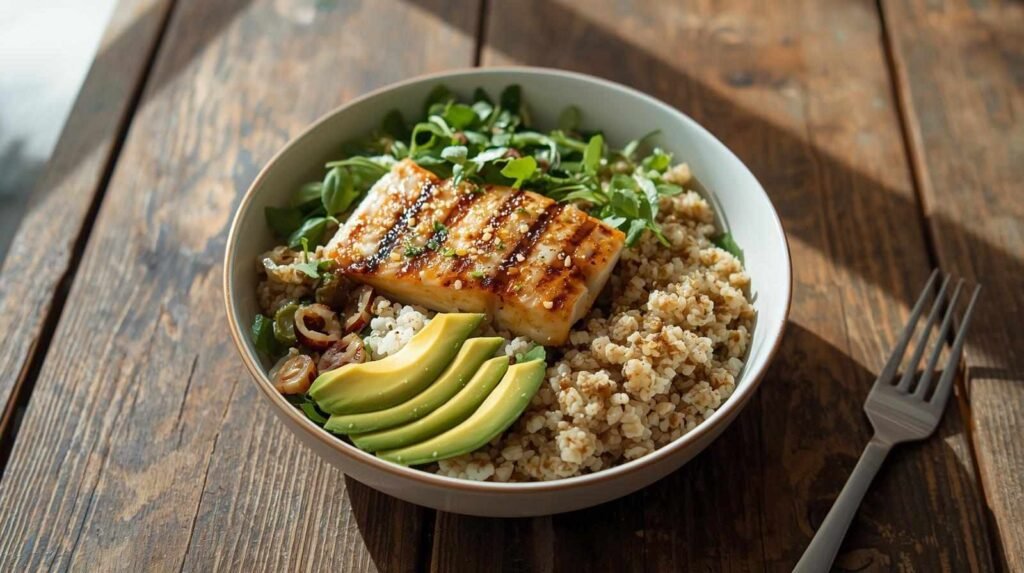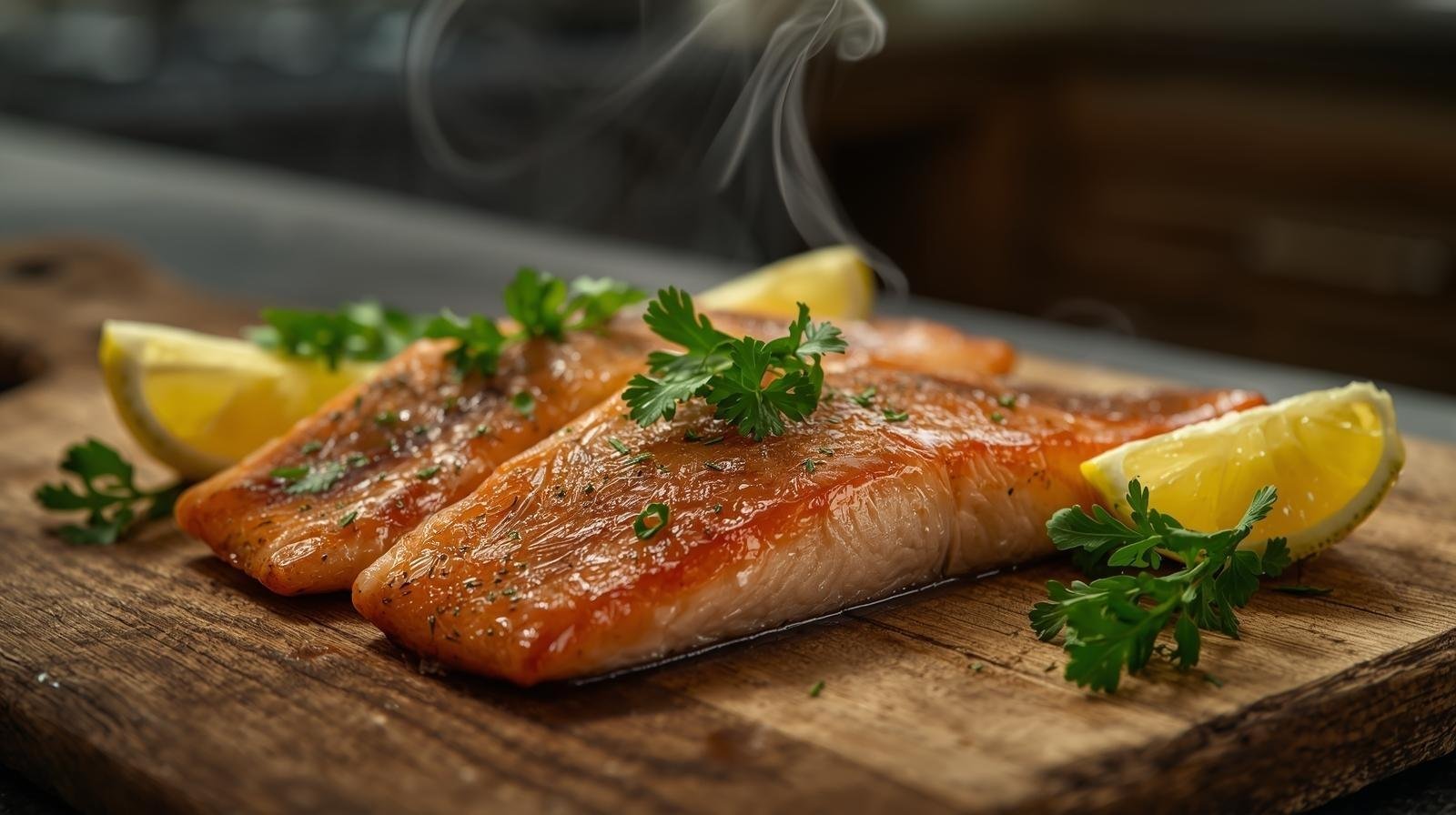Introduction
Ever come across a food that’s quietly extraordinary — the kind you almost overlook at the grocery store, yet it’s packed with everything your body needs? That’s Alaskan Seiti for you. It’s not as glamorous as salmon or as fancy as sea bass, but it’s quietly building a loyal fanbase among health enthusiasts and budget-conscious foodies alike.
When I first heard about Alaskan Seiti, I thought, “Okay, another white fish, big deal.” But after digging a little deeper (and tasting it in a simple lemon-butter recipe), I realized this fish might just be the unsung hero of healthy eating. Light, versatile, and surprisingly affordable — it’s one of those humble foods that remind us nutrition doesn’t have to come with a hefty price tag.
What Exactly Is Alaskan Seiti?
To put it simply, Alaskan Seiti is a white-fleshed fish, often referred to as Alaska pollock in many parts of the world. It’s a staple in Nordic and Alaskan diets — mild in flavor, firm in texture, and perfect for both home cooks and professionals.
But beyond its taste, Alaskan Seiti has something even more powerful going for it: its nutrient density. This fish is naturally rich in protein, vitamin B12, and omega-3 fatty acids while being low in calories and fat. In fact, according to the USDA Food Database, a 100g serving of pollock contains about 17g of protein and just 75 calories — an unbeatable combo for anyone watching their weight or building muscle.
Why Alaskan Seiti Deserves More Love
Let’s be honest — when people think of “healthy fish,” their minds jump straight to salmon or tuna. And sure, those are great, but they also come with higher prices and sustainability concerns. Alaskan Seiti, on the other hand, quietly checks all the boxes without the hype.
Here’s why it’s worth a spot on your plate:
- Affordable Nutrition – Compared to salmon, Alaskan Seiti gives you a similar protein punch for half the price.
- Sustainably Sourced – It’s often caught in the North Pacific using sustainable fishing methods, making it eco-friendly.
- Low in Mercury – Unlike larger fish, Seiti ranks low in mercury, making it safer for frequent consumption.
- Versatile in Cooking – Its mild taste works beautifully in everything — from tacos to soups to grilled dishes.
Nutritional Breakdown of Alaskan Seiti
Here’s what makes this fish such a nutritional powerhouse:
| Nutrient (per 100g) | Alaskan Seiti | Salmon | Tuna |
|---|---|---|---|
| Calories | 75 kcal | 208 kcal | 132 kcal |
| Protein | 17 g | 20 g | 29 g |
| Fat | 0.8 g | 13 g | 1 g |
| Omega-3 | 0.4 g | 1.8 g | 0.2 g |
| Vitamin B12 | 0.9 µg | 2.8 µg | 10.9 µg |
| Mercury Level | Very Low | Moderate | High |
(Source: USDA and Healthline)
This table paints a pretty clear picture — Alaskan Seiti gives you lean protein with minimal fat, perfect for those who want clean energy without heaviness. It’s light on the stomach yet rich in nutrients your body craves.
How to Cook Alaskan Seiti Like a Pro
Cooking Alaskan Seiti is refreshingly simple. Its neutral flavor means it absorbs whatever spices or marinades you throw at it.
- Pan-Seared Perfection: A squeeze of lemon, a sprinkle of salt and pepper, and a quick sear on each side — that’s all it takes.
- Healthy Bake: Coat it with olive oil, garlic, and herbs, then bake at 400°F for about 12–15 minutes.
- In Soups or Stews: Drop it into a hearty vegetable broth — it holds together beautifully.
- Grilled: Marinate it in soy, ginger, and lime for a light summer meal that tastes like a vacation in Alaska.
If you’ve ever cooked cod or tilapia, you’ll find Seiti behaves almost the same way, but with a more satisfying bite.

The Health Benefits That Might Surprise You
Beyond being low-calorie and protein-rich, Alaskan Seiti brings several unexpected benefits:
- Heart Health Booster – Thanks to its omega-3s, it helps reduce inflammation and supports cardiovascular function.
- Brain Function Support – Vitamin B12 and omega-3s together promote better focus and memory.
- Weight Management – Low fat, high protein… you can’t go wrong. It keeps you full longer, reducing snack cravings.
- Skin Glow – Omega-3s nourish your skin from within, improving elasticity and hydration.
- Eco-Friendly Eating – Choosing Seiti means supporting sustainable fishing — good for you and the planet.
As eating fish like pollock twice a week can help lower the risk of heart disease and boost mental health.
Is Alaskan Seiti Suitable for All Diets?
Absolutely! Whether you’re keto, pescatarian, or just aiming for clean eating, Alaskan Seiti fits right in.
It’s low in carbs, high in protein, and adaptable to different cuisines.
For vegetarians transitioning to fish-based diets, it’s a gentle introduction — mild, non-fishy, and easy on digestion. And for busy folks juggling family and work, its quick cooking time is a huge plus.
The Sustainability Factor
It’s not just healthy for people — it’s healthy for the planet too.
Alaskan Seiti is usually wild-caught from regulated fisheries in the Bering Sea and North Pacific, where sustainability practices are strictly enforced.
The Marine Stewardship Council (MSC) certifies many Alaskan pollock fisheries for responsible harvesting. That means when you buy Seiti, you’re supporting ocean conservation and responsible fishing practices.
Quick Tips for Buying and Storing Alaskan Seiti
- Look for MSC Certification: It ensures the fish was sustainably caught.
- Check for Freshness: Flesh should be firm and translucent.
- Store Properly: Keep it refrigerated below 40°F and consume within two days.
- Freeze Smartly: It freezes well for up to 3 months without losing flavor.
My Week with Alaskan Seiti
Here’s a fun little anecdote — I decided to swap my usual lunch protein (chicken or tuna) for Alaskan Seiti for an entire week.
By day three, I noticed I wasn’t feeling that post-lunch heaviness I usually get. My meals felt lighter, and I didn’t crash mid-afternoon. Plus, I saved a few dollars — which, let’s be real, felt just as good as eating healthy.
By the end of the week, I was hooked. It’s now my go-to for quick weekday dinners and lazy Sunday lunches.
Also read: What Is Pushmeer? The Shocking Truth Behind the Trend
The Underrated Gem of the Sea
Despite its quiet reputation, Alaskan Seiti holds its own in the world of nutritious foods. It’s one of those underrated gems that offer value, taste, and sustainability all in one package.
If more people knew how easy it is to prepare — and how good it makes you feel — it wouldn’t be underrated for long.
Conclusion
Sometimes, the best things aren’t the loudest. Alaskan Seiti may not be trending on social media or featured in fancy restaurant menus, but it quietly earns its place as one of the healthiest, most sustainable fish you can eat.
It’s a humble reminder that nutrition, sustainability, and flavor can coexist — without breaking the bank. So next time you’re in the seafood aisle, maybe skip the overpriced salmon fillet and give Alaskan Seiti a shot. Your body (and your wallet) will thank you.
FAQs
1. Is Alaskan Seiti the same as Alaska pollock?
Yes, in most cases, “Alaskan Seiti” refers to the same fish known as Alaska pollock — a white-fleshed, mild-tasting fish from the North Pacific.
2. Is it safe to eat Alaskan Seiti every day?
Absolutely. It’s low in mercury and fat, making it safe for regular consumption — just balance it with other protein sources.
3. Can I use Alaskan Seiti in sushi?
Yes, it’s often used in imitation crab (surimi) and sushi products due to its firm texture and neutral taste.
4. Is Alaskan Seiti sustainable?
Yes, most Alaskan Seiti comes from MSC-certified fisheries that follow strict sustainability guidelines.
5. What makes it a “super fish”?
Its nutrient-to-calorie ratio, affordability, and low environmental impact make it a true “super fish.”
Thanks for visit Techywil











